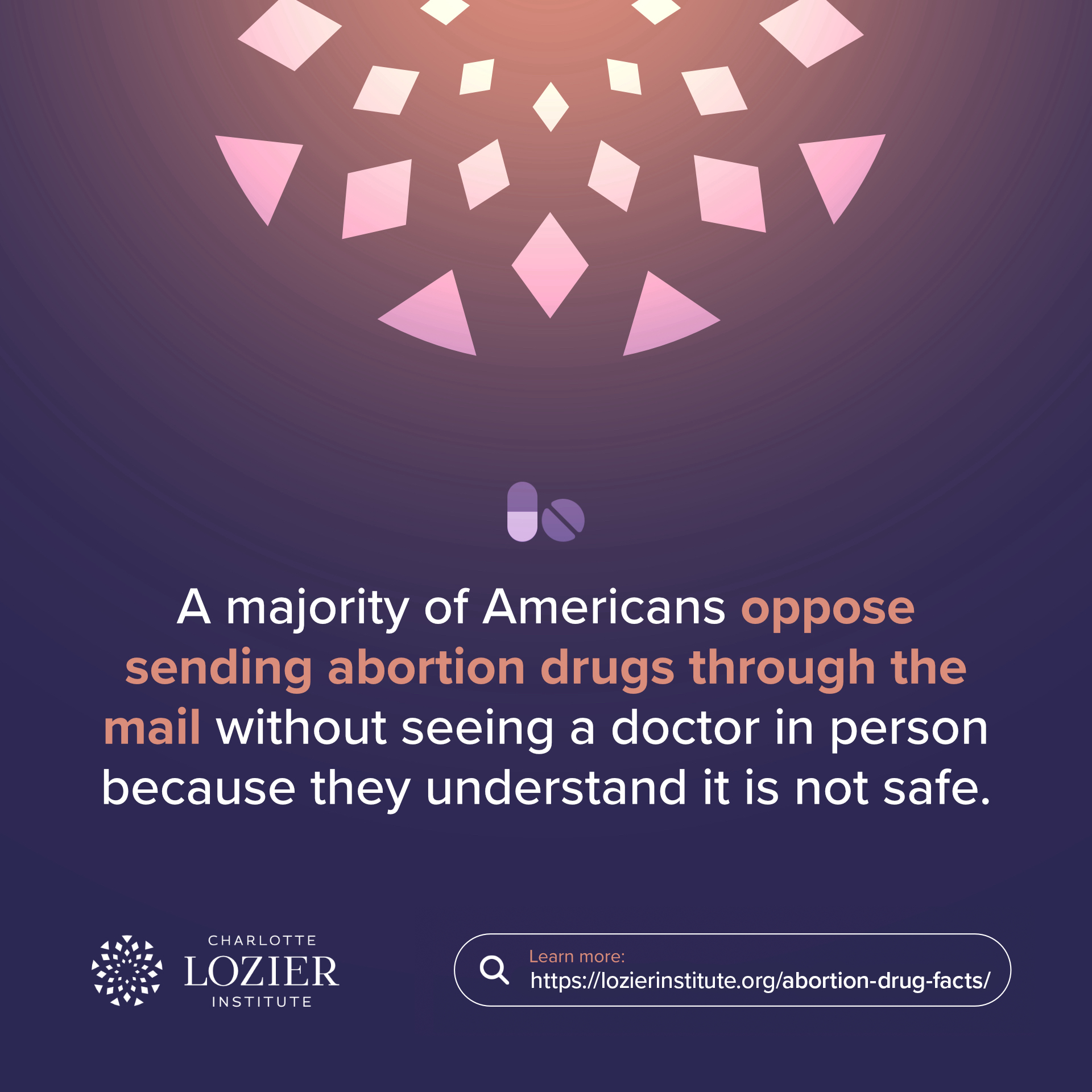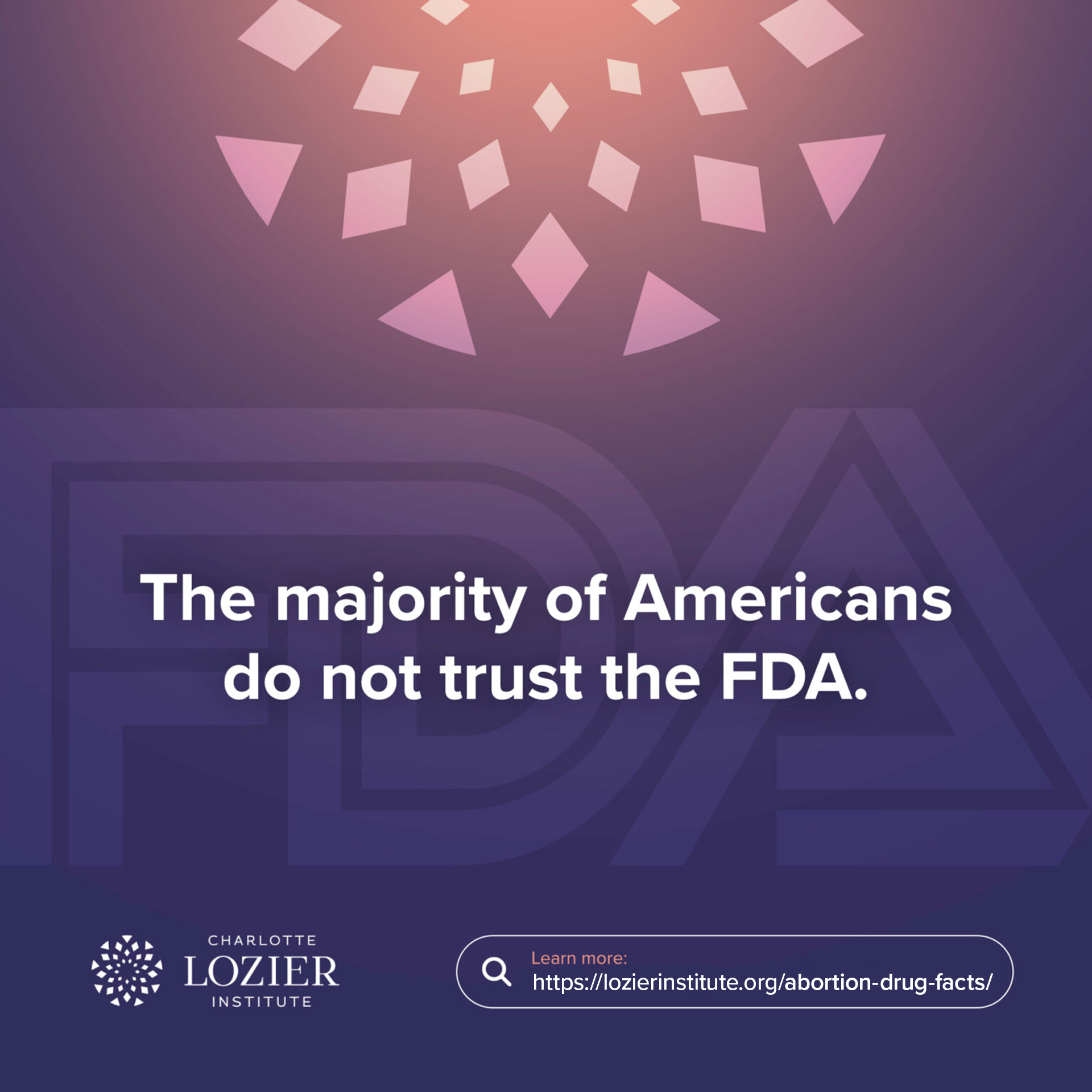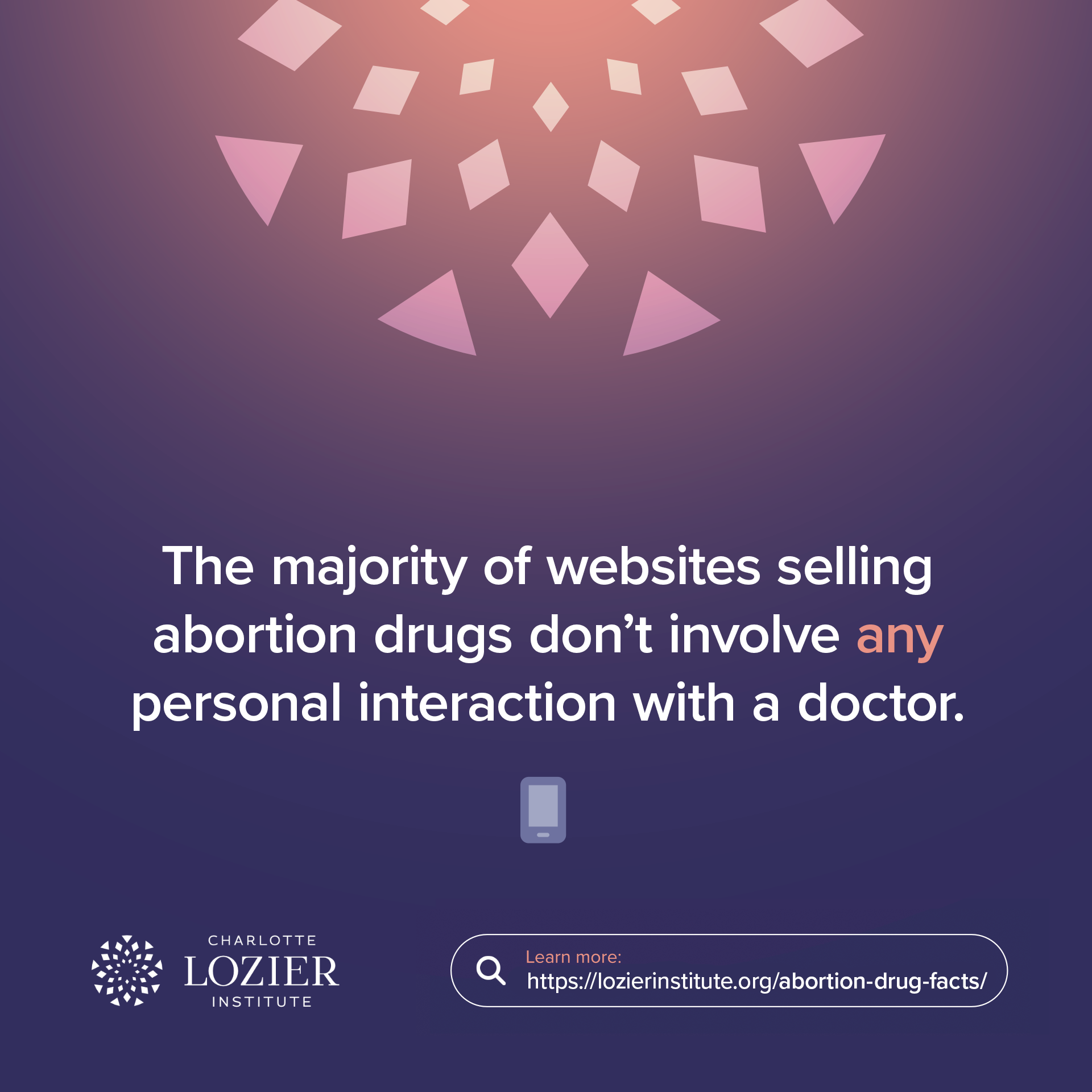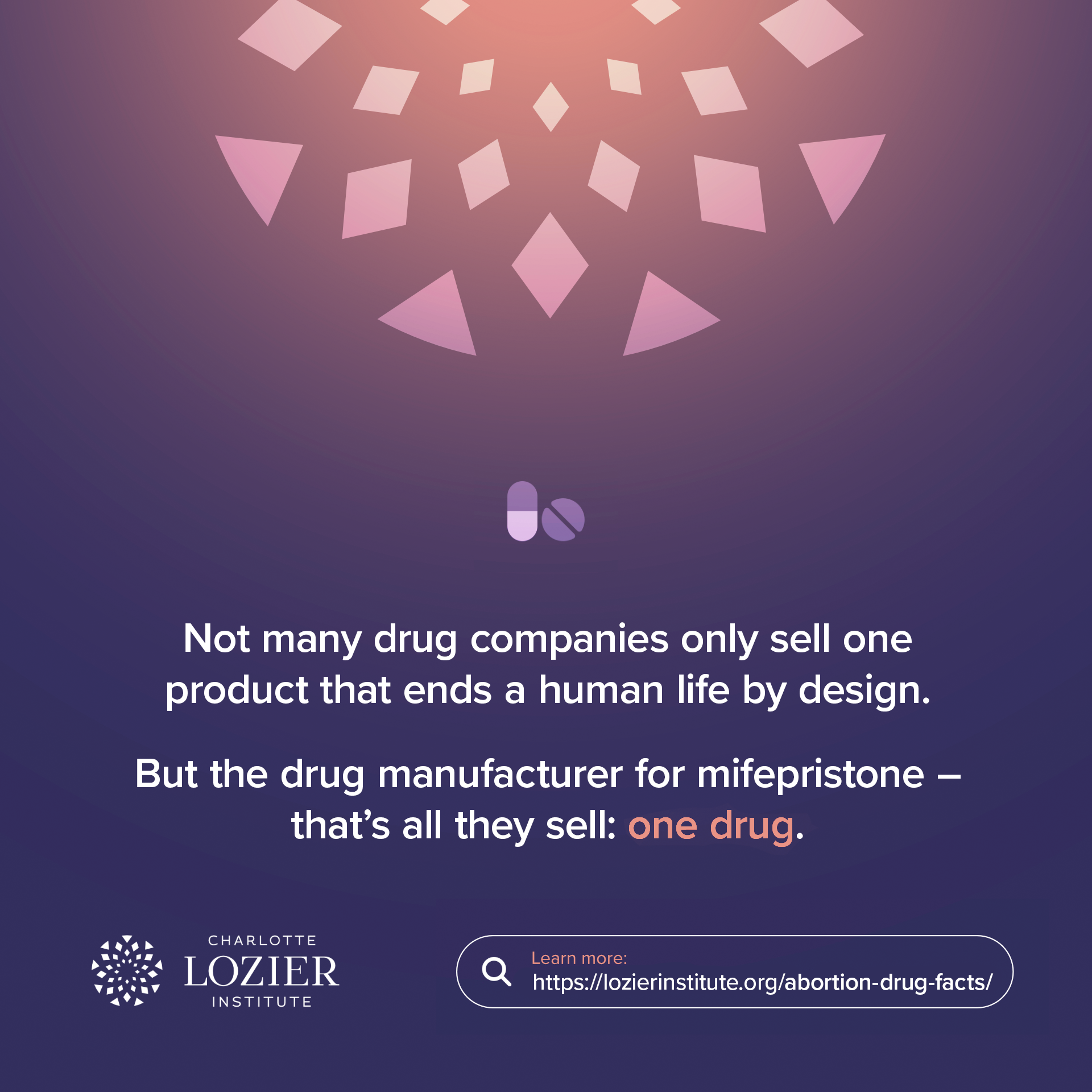FDA v. AHM Messaging Guide
Summary of the Case
On March 26, the Supreme Court is set to hear a case challenging the FDA’s reckless actions removing the safety standards that the FDA originally felt were necessary to bring the abortion drugs to market in 2000. Although the case is related to abortion, the question before the Court is whether the FDA broke the law and its own rules when it removed virtually every safety standard, ignoring women’s need for in-person doctor visits and ongoing care when taking dangerous abortion drugs. Doctors, who have been witnessing the harm to women and girls, are asking the Court to hold the FDA accountable for failing its duty to protect public health and safety.
Top Messages
Women should have the ongoing care of a doctor when taking high-risk drugs. The FDA betrayed women and girls when it removed its own safety standards to push dangerous abortion drugs.
- When the FDA first approved abortion drugs, it required doctors to provide ongoing care to women using the drugs, including an initial in-person visit to screen for important conditions, and a follow-up visit to check for life-threatening complications like bleeding and infection. The FDA’s decision to remove this important care puts the health of women and girls at risk.
- The FDA’s own label for these abortion drugs says that roughly one in 25 women who takes the drugs will end up in the emergency room.
- Physicians are now witnessing the harm the FDA has caused through their reckless actions, as they now must serve women and girls facing severe health complications because of the FDA’s illegal actions.
- Don’t just take our word for it, to learn more visit AbortionDrugFacts.com.
The FDA changed safety standards to allow for mail-order abortion drugs for political reasons, jeopardizing the health and safety of women and girls.
- In 2021, the FDA permanently eliminated the in-person dispensing requirement, allowing mail-order abortion drugs without any in-person exam.
- Through telehealth appointments it is impossible to screen for complications, such as ectopic pregnancy, which affects one in 50 women.
- A majority of women who had abortions, over 60%, reported pressure to abort including from boyfriends, family or more, according to data from the Lozier Institute.
- Without in-person medical exams, doctors can’t screen pregnant women or girls for coercion and abuse.
- Telehealth exams can’t account for abusers who may be just out of view of the computer screen.
- There’s only one side financially profiting off a young woman’s coerced choice and that’s abortion activists enabled by Biden’s FDA.
- Mail-order abortion drugs are not empowering – women describe feeling isolated, silenced and regretful.
The FDA changed the safety standards for abortion drugs to allow mail-order abortion drugs by relying on studies that used in-person medical visits.
- The FDA approved mail-order abortion drugs based on studies that used physical exams, ultrasounds, and labs to screen for known risks — all forms of care that are not possible over the Internet.
- At 63%, a majority of Americans oppose mail-order abortion drugs.
- The FDA has made a young woman or teenage girl the administrator of her own abortion and her home the abortion center. By eight weeks’ gestation the body of an unborn baby – her baby – delivered into a toilet would be visible and recognizably human.
- Biden’s FDA and abortion activists seek to turn every home into a dangerous abortion center, leaving women and girls to deal with serious complications and emotional trauma themselves.
Q&A – Answering Tough Questions
No. This case is about the FDA’s reckless decision to remove important safety standards for dangerous abortion drugs and allow for mail-order abortion drugs. The FDA put politics before safety and gambled with countless lives. A majority of Americans oppose sending abortion drugs through the mail without seeing a doctor in person because they understand it is not safe.
The FDA should not be taking shortcuts to appease the abortion lobby. The law mandates the FDA protect the safety of Americans, not approve dangerous mail-order drugs in a politicized process. What we need is for the FDA to stop sidestepping safety and ignoring its own rules. The FDA’s commitment should be to the American people.
First of all, we’re talking about the federal government. The length of time indicates nothing about the quality of the work. We know that during that time the FDA was not following the data; instead they deliberately decided not to collect data on any serious complications other than death. This is politics at its worst.
When we hear the word “telehealth,” it’s crucial to understand the majority of websites selling abortion drugs don’t involve any personal interaction with a doctor. Anyone can fill out a form and get the drugs sent to them. They’re not screening for domestic abuse or trafficking, or for dangerous conditions like ectopic pregnancies (for which half of women have no risk factors).
The FDA is an unelected bureaucracy. Where else would the checks and balances be when they ignore the lawmaking branch? It’s appropriate for the courts to remind them that they’re required to follow existing laws. What’s hypocritical is pro-abortion Democrats continually using the courts to impose partisan policy agendas and fight tooth and nail against the will of the people who want commonsense protections for women and babies.
The majority of Americans don’t trust the FDA or believe their claims that mail-order abortion pills are safe. Accountability has to be the first step toward repairing the damage to the public’s trust.
Most doctors want to help their patients heal and live healthy lives, not end their lives. Around 90% of OB-GYNs don’t perform elective abortions. For them nothing changes about the way they practice, except that we hope fewer women will suffer emergencies from complications of abortion drugs, like bleeding, infection and the need for surgery.
What would help recruit new students is not kicking OB-GYNs who represent the majority out of major educational conferences. We need more inclusion – prospective medical students deserve to hear their fact- and science-based perspective.
Let’s see them. The New York Times hasn’t been transparent. They didn’t publish the list and haven’t provided it to independent researchers even after repeated request. If they stand behind their journalism, then release the study names.
The little information they did publish shows a heavy pro-abortion bias. Most of their “experts” have financial ties to abortion drug manufacturers and some are abortionists themselves. They even went to Planned Parenthood to double check their work. In contrast, a major U.S. study of over 400,000 confirmed abortions used 17 years of paid Medicaid claims records – not voluntary surveys cherry-picked by the abortion industry – and found the rate of abortion drug-related ER visits spiked 500%. Analysis shows that when women show up in ERs after taking abortion drugs, their complications are miscoded as a miscarriage over 60% of the time, and this puts them at twice the risk of being admitted for surgery.
That quote is out of context. The district court judge was trying to grant policy changes that the abortion lobby demanded, based on an alleged “right” to abortion on demand that seven men in black robes suddenly discovered hiding out in the Constitution after 200 years. Speaking of hypocrisy, abortion activists would have been happy with that outcome had Chief Justice Roberts not pushed back. In fact, the Supreme Court concluded that in-person doctor supervision for abortion drugs should stay in place.
The Court in 2021 (ACOG v. FDA) was not asked to weigh in on whether the FDA broke the law when it ignored the data and rolled back critical safety standards that were included in early studies. It’s clear the FDA broke the rules and that’s what the courts are being asked to weigh in on now.
Abortion advocates are exaggerating. Around 90% of OB-GYNs don’t perform elective abortions yet they are still able to care for women experiencing a miscarriage. Mifepristone is rarely used for miscarriage management because it requires a special certification that most OB-GYNs don’t have. All OB-GYNs have several effective options available for miscarriage management that don’t depend on the availability of this one abortion drug – which carries a “Black Box” warning, the strongest possible safety warning. The bottom line is, women will still receive appropriate and safe miscarriage care without dangerous abortion drugs being shipped in the mail.
It took pro-abortion groups like ACOG four months after Dobbs to petition the FDA to change the label and add miscarriage management. Ask them what took them so long.
- Major international studies show that abortion drugs pose four times the risks of surgical abortion. As many as one in five women will suffer a complication. Furthermore, this case does not have any impact on the legality of surgical abortion or even whether abortion drugs stay on the market – only whether they can be purchased and sent over the mail without any of the safeguards that existed up until the Obama years.
- Federal Medicaid data show that the rate of abortion-drug-related ER visits has gone up more than 500% since mifepristone was approved.
- Compared to surgical abortions, the science shows abortion drugs put women at over 50% greater risk of an ER visit for complications within 30 days, affecting one in 20 women.
- Three to seven out of every hundred women who take abortion drugs early in pregnancy will need surgery to finish the abortion. As many as 15% will experience hemorrhage, and 2% will have an infection.
You’re referring to the “Comstock Laws” (18 USC 1461-2), which make it illegal to send abortion drugs in the mail. It’s worth noting that longstanding federal law was updated under President Clinton, in the 1994 Crime Bill and the 1996 Telecommunications Act. So even while Clinton made it a priority to bring abortion drugs to market, Congress was passing and Clinton was signing laws that had the effect of strengthening federal safeguards against abortion-by-mail.
The FDA ignoring federal law is yet another example of the agency putting politics over people. The law aligns with the majority (63%) of Americans who oppose mail-order abortion drugs. It’s clearly in the public interest. Like the plaintiffs, we’re not aware of any case that says the FDA can just pick and choose which federal laws it doesn’t want to follow.
This case has no impact on the availability of surgical abortion for those seeking one, or even whether mifepristone remains available (it will). This case is about the FDA breaking the law and its own rules by taking a drug four times as risky as surgical abortion and sending it to women and girls through the mail without their even seeing a doctor in person.
The FDA should do its job to protect women and girls from life-threatening complications. They need to stop ignoring science and be held accountable. Moreover, it’s offensive to suggest the solution to maternal mortality is to tell women not to have babies.
This case is about the dangerous, controversial and politicized approval of mail-order abortion drugs. In every instance abortion is aimed at ending the life of a baby in the womb. Birth control is approved to prevent, not end, pregnancy. There is no law anywhere in the U.S. that bans birth control.
This case is not about the morning-after pill, which is a form of emergency contraception. It is about dangerous abortion drugs being mail-ordered to women and young teens, with no in-person doctor visit, no comprehensive collection of complications and – at least until now – no accountability for the FDA.
Again, this case is about a mail-order abortion drug that is designed to end a human life on purpose. Abortion drugs are never safe for unborn babies, and the data show they’re four times as dangerous for women as surgical abortion.
That said, it’s true the FDA hasn’t always followed science or its own rules. Here are some examples of why we shouldn’t have blind trust:
- Look at Vioxx, which was taken off the market after 20 million Americans had used it and many died.
- Look at the historic settlements over opioids and the Biden administration bringing back in-person doctor visits for certain medications.
- One controversial opioid known as Zohydro ER (hydrocodone) was pulled from the market almost a decade after it was first approved.
- Last September, an FDA advisory panel conceded that a decongestant used for decades in over 200 over-the-counter cold medicines doesn’t work – which is something most people who had ever tried it already knew.
- And just recently, the maker of a pricey new Alzheimer’s drug halted all sales and studies after the FDA had already rushed to fast-track its approval. An independent committee had voted against approval based on a lack of evidence that it worked, and the FDA official responsible resigned.
It’s disturbing that the FDA has escaped accountability for rolling back safeguards on abortion drugs for so many years. Necessary corrections won’t cause the system to collapse, not when the alternative is taking unsafe drugs. No American should have to worry that the FDA is breaking its rules and putting politics over patients. Their job is to keep Americans safe, not to be pals with the pharma companies.
If the FDA had done its job properly, we wouldn’t be having this discussion today. Instead, they put politics first and ignored their own rules to fast-track for approval, jeopardizing the health and safety of women and girls. Then they intentionally stopped collecting data on complications. Now they say it’s perfectly safe to get these drugs via the mail without seeing a doctor, despite clear evidence. The FDA’s “see no evil, hear no evil, report no data on evil” approach does not mean this drug is safe. Women have died and the rate of ER visits due to these drugs is up 500% since the drug was approved. The FDA approved sending mail-order drugs based on studies that used in-person exams, ultrasounds and labs. It’s time to correct years of egregious decisions.
Again, when government bureaucracies are involved, length of time doesn’t necessarily equal quality of work. The FDA actually has been challenged about their handling of abortion drugs going all the way back to the late ‘90s, but they have stonewalled opposition and multiple citizen petitions for decades now while the science and data on the dangers of these drugs have piled up. Unfortunately, this is their M.O. They wield the legal system to their benefit and have kept unsafe drugs on the market for years. At times they’ve even kept unsafe or ineffective drugs on the market for years after it was clear. Accountability is long overdue.
This case ONLY has to do with drugs for induced abortions, not miscarriages and the FDA’s decision to change the safety standards for these drugs. Doctors are still allowed to prescribe medication for another medical condition, like preventing ulcers or managing a miscarriage, and their patients aren’t in trouble.
Ironically, the FDA is reinstating in-person visits for ADHD medications, pain medications and other drugs but not for these dangerous abortion drugs. Don’t women deserve the same quality of care with a drug that can cause serious complications?
This question seems to be part of an intentional effort to conflate abortion and miscarriage. Miscarriage management happens when the unborn child dies of natural causes. Abortion drugs intentionally block the hormones needed to keep the baby alive to end his or her life and then expels him or her from the womb. Two entirely different things.
By sidestepping safety, the FDA was the one who turned a blind eye and failed communities of color. To best help vulnerable communities, we must link them with financial and physical resources. Right now, there are more than 3,000 pregnancy centers and maternity homes across the United States that serve women and families of all races, creeds and socioeconomic backgrounds. Pregnancy centers provide quality medical, material and emotional support services – typically at no cost. So while the abortion industry profits from unsafe mail-order abortion drugs, life-affirming nonprofits are getting financial and physical resources into the hands of communities in need.
The pro-life movement unequivocally rejects penalizing the woman or girl who undergoes an abortion. Abortionists and abortion drug suppliers who exploit them for profit should be the ones held accountable.
Unsafe mail-order abortion drugs put women and young teens at risk. Abortion activists are playing a dangerous game with the lives of women and girls. By putting the act of abortion over the needs of the woman, they have persuaded the Biden FDA to approve dangerous mail-order abortion drugs. Based on Medicaid data, these drugs send women to the ER at alarming rates.
The FDA’s job is to protect all Americans by ensuring that our drugs and our food are safe. Their mission statement promises to help us “get accurate, science-based information” to make informed decisions about our health care. With mail-order abortion drugs, they’ve failed to do that and they must be held accountable.
The contrast is clear: Democrats want to mandate abortion on demand up to birth for any reason across the country, requiring fewer safety controls for mail-order abortion drugs, while Republicans stand with young women and girls advocating better health care and safety.
If the FDA did its job by looking at the available data, they’d see that mail-order abortion drugs are not safe.
Abortion Pill Reversal (APR) uses the natural hormone progesterone to reverse the effects of the first drug when a woman changes her mind after starting the abortion process. Progesterone has been used safely to support healthy pregnancies since the 1950s – it is commonly used today to reduce the risk of premature birth and multiple miscarriages. Pro-abortion researchers with a vested interest have tried to discredit APR, but even their biased studies demonstrate that it works. One doctor from the Yale School of Medicine even told the New York Times it “makes biological sense” and he would recommend it for his own daughter.
APR offers a second chance at choice and is credited with saving at least 4,000 babies in the last decade. Women deserve to know that safe, effective treatment exists that could save their child if quick action is taken.
This statistic created by abortion advocates has been thoroughly debunked and doesn’t even make logical sense. Abortion is a violent act that kills the unborn child and harms the mother. In Scandinavian countries with far more accurate and complete data on pregnancy outcomes, including abortion and childbirth, study after study shows that a woman is almost four times more likely to die from abortion than childbirth.
In America, medical care is so advanced that even in high-risk pregnancies, it’s rare not to have a safe delivery of a healthy baby alongside a healthy mother. Meanwhile abortion on demand is so unpopular, the abortion lobby has to use fear to sell its agenda. The FDA did their bidding by rubber-stamping mail-order abortion drugs. Pregnancy isn’t a disease and abortion isn’t health care.
Polling
75% agree (52% strongly agree) that the FDA should have performed studies focused on girls under the age of 18 before approving abortion drugs for minors.
62% feel not very confident (26%) or not at all confident (35%) in the claim that abortion drugs are safe after being on the market for two decades, when they know that the FDA tracks no side effects other than death.
61% disagree that it is safe to distribute abortion drugs through the mail with little to no supervision (41% strongly disagree), in light of the increased risk to women of coercion and abuse.
56% consider the FDA untrustworthy (31% very untrustworthy) when they learn that the FDA fast-tracked abortion drugs using its accelerated drug approval authority by calling pregnancy a “life-threatening illness.”
By a double-digit margin (51%-39%), Americans disagree that abortion drugs have been vetted carefully enough to protect women’s health and safety, based on what they know about the FDA (10% were unsure or did not respond).
Background Information
Abortion Lobby Fights Dobbs with “Mail Order Abortion”
The Abortion Lobby views mail-order abortion drugs as the future of their industry because they are cost-effective for them and hard to regulate. In the Dobbs era, they are fighting back by creating the Amazon of Abortion, making abortion drugs available through the mail, and turning pharmacies and post offices into abortion centers.
19 States Have Already Taken Action to Stop the Distribution of Dangerous Mail-Order Abortion Drugs
19 states have already acted to stop the distribution of dangerous abortion drugs by mail, and litigation is pending in three others to protect women from mail-order abortion drugs.
19
Alabama, Arkansas, Arizona, Florida, Indiana, Kansas, Kentucky, Louisiana, Mississippi, Missouri, Nebraska, North Carolina, North Dakota, Oklahoma, South Carolina, Tennessee, Texas, West Virginia, and Wisconsin
3
Ohio, Montana, and South Dakota
What is the FDA’s Risk Evaluation Mitigation Strategy (REMS)?
Mifepristone is a dangerous drug, and ever since it was first approved, it has had safety restrictions which became formalized as a Risk Evaluation Mitigation Strategy (REMS), an FDA protocol for drugs with serious potential risks, requiring physicians to dispense the drug directly to the patient.
However, the abortion lobby steadily has worked to undermine these protections. In 2021, they used the COVID-19 pandemic as an excuse to roll back a key portion of the REMS – the requirement that abortion facilities administer drugs in person. Now, abortion drugs are available through the mail and in any pharmacies that choose to participate after FDA certification.
As a result, women and girls can now go online and order dangerous drugs that have potentially extreme risks of infection and hemorrhage, without ever being examined by a physician. They are left to take these drugs at home in isolation, without medical care, and will deliver their tiny, unborn child all alone. Women are in danger of significant harm or even death:
- Failure to screen for ectopic pregnancy can put women’s lives at risk.
- Many women don’t accurately date their pregnancies, and with no physical exam or ultrasound can accidentally take drugs too late in pregnancy, when they are even more dangerous.
- There is no oversight of where abortion drugs end up, making them the perfect tool for traffickers and abusers.
- As many as 15% of women undergoing chemical abortion suffer hemorrhage.
- One in 50 will have an infection.


These risks increase as pregnancy advances. Pro-life laws on the state and federal level are no longer adequate to save women’s lives. Abortion restriction laws, parental consent laws, informed consent laws and more will be circumvented by the ability of anyone to order abortion drugs from anywhere for any reason.
AHM v. FDA could be the most significant pro-life battle since Dobbs. For in-depth resources, visit AbortionDrugFacts.com and LozierInstitute.org.
Social Media
Graphics




Text
This case is about one particularly dangerous abortion method – mail-order drugs – that never should have been approved, and wouldn’t if the FDA had done its job properly.
The FDA put politics before safety and gambled with countless lives.
A majority of Americans oppose sending abortion drugs through the mail without seeing a doctor in person because they understand it is not safe.
It’s crucial to understand the majority of websites selling abortion drugs don’t involve any personal interaction with a doctor.
Anyone – including domestic abusers and human traffickers – can fill out a form and get the drugs sent to them, no questions asked.
Not many drug companies only sell one product that ends a human life by design.
But the drug manufacturer for mifepristone – that’s all they do, one drug.
The majority of Americans don’t trust the FDA.
They don’t believe the FDA’s claims that mail-order abortion drugs are safe.
Accountability has to be the first step toward repairing the damage to the public’s trust.
Post last modified: March 22, 2024


